Intro
Although virtual environments have been around for a long time, they have largely been regarded as entertainment or as accessories to physical activity and interaction. However, the post-digital revolution and ongoing pandemic sees us increasingly using virtual platforms as substitutes for real-life interaction, while advancements in technology and cost have made virtual reality (VR) headsets more accessible to the average consumer. Within these virtual spaces, traditional architectural notions such as scale, space, movement, and interaction take on vastly different forms – yet the design of most VR environments are merely imitative and mimic the designs and trappings of physical space. While skeumorphic design imitating the real world might be enjoyable and comforting for some applications, spatial design in VR warrants a critical re-examination of its foundations.
The thesis explores the potential of architectural design for VR spaces as an end in itself, given the immersive nature of such spaces and their increasing relevance. It is split into two parts – while the first section investigates the design implications and strategies for VR space, the second explores the design of a fully functional app in VR showcasing the possibilities of this new spatial paradigm.
Part 1
In the first section, I took a broad-based approach to investigating the various possibilities and design strategies of spatial environments in virtual reality. Precedent texts
and case studies were studied to gain an understanding of existing VR spaces, followed by a series of design experiments and user tests covering various aspects of the VR spatial experience. The product is a catalogue of design principles that serve as a reference for future design in VR.
Part 2
In the second part, I attempted the creation of a functional VR environment that exemplified my design principles and pushed the boundaries of virtual space design. With the use of VR to anchor our online experiences in virtual space, VR.Reddit aims to not only provide a unique virtual browsing experience, but also to create a shared space for media consumption and interaction that goes against the current media landscape of individualised echo chambers. Users are able to view and consume information in the virtual space as well as see and interact with other users within this shared forum. Beyond simple 3D visualisations to aid design and showcase built works, the virtual reality platform provides unprecedented opportunities for architects to create new spatial paradigms that users increasingly inhabit.
https://jy-matt.github.io/post.spaces/thesis-index.html
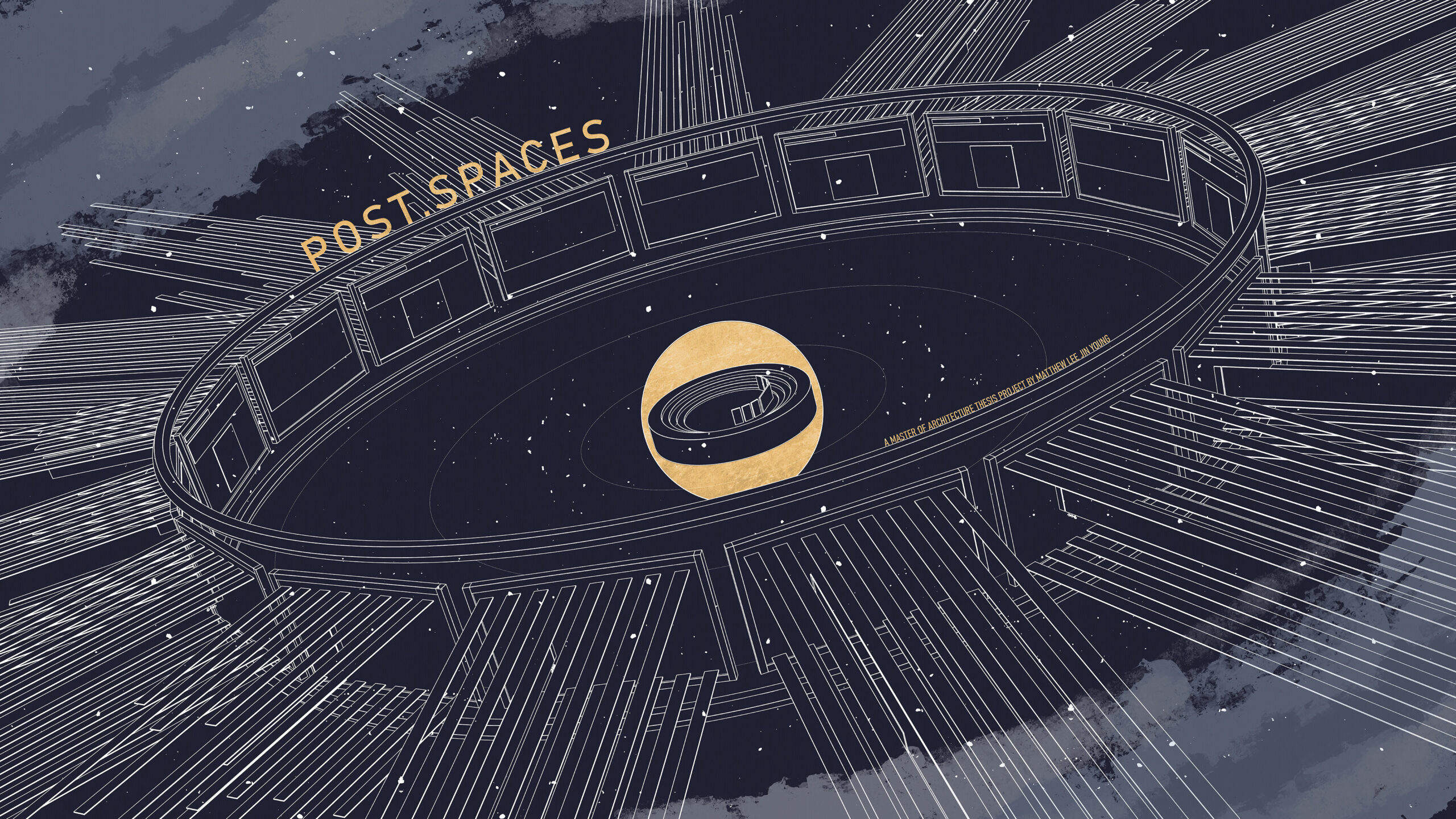
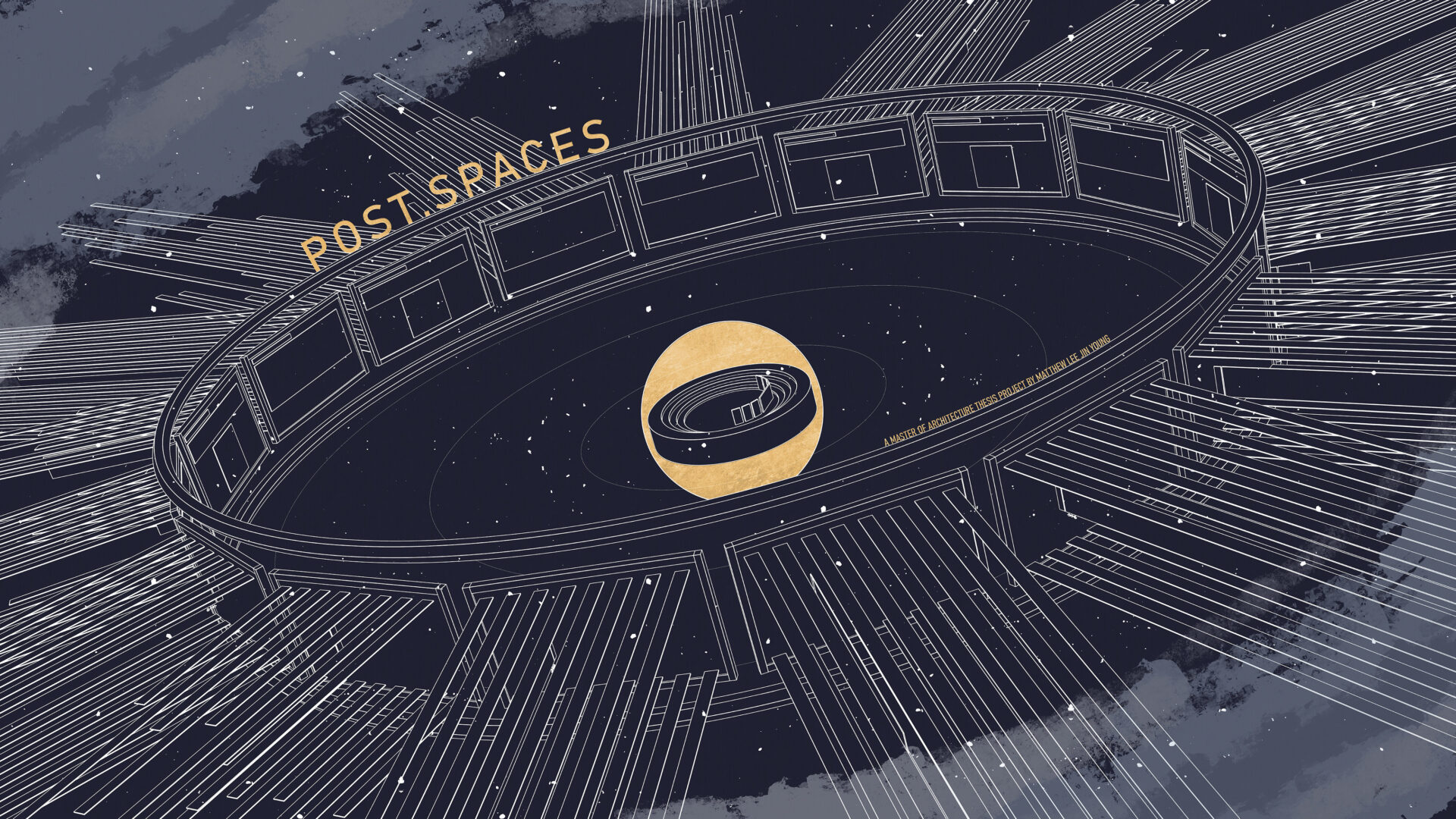
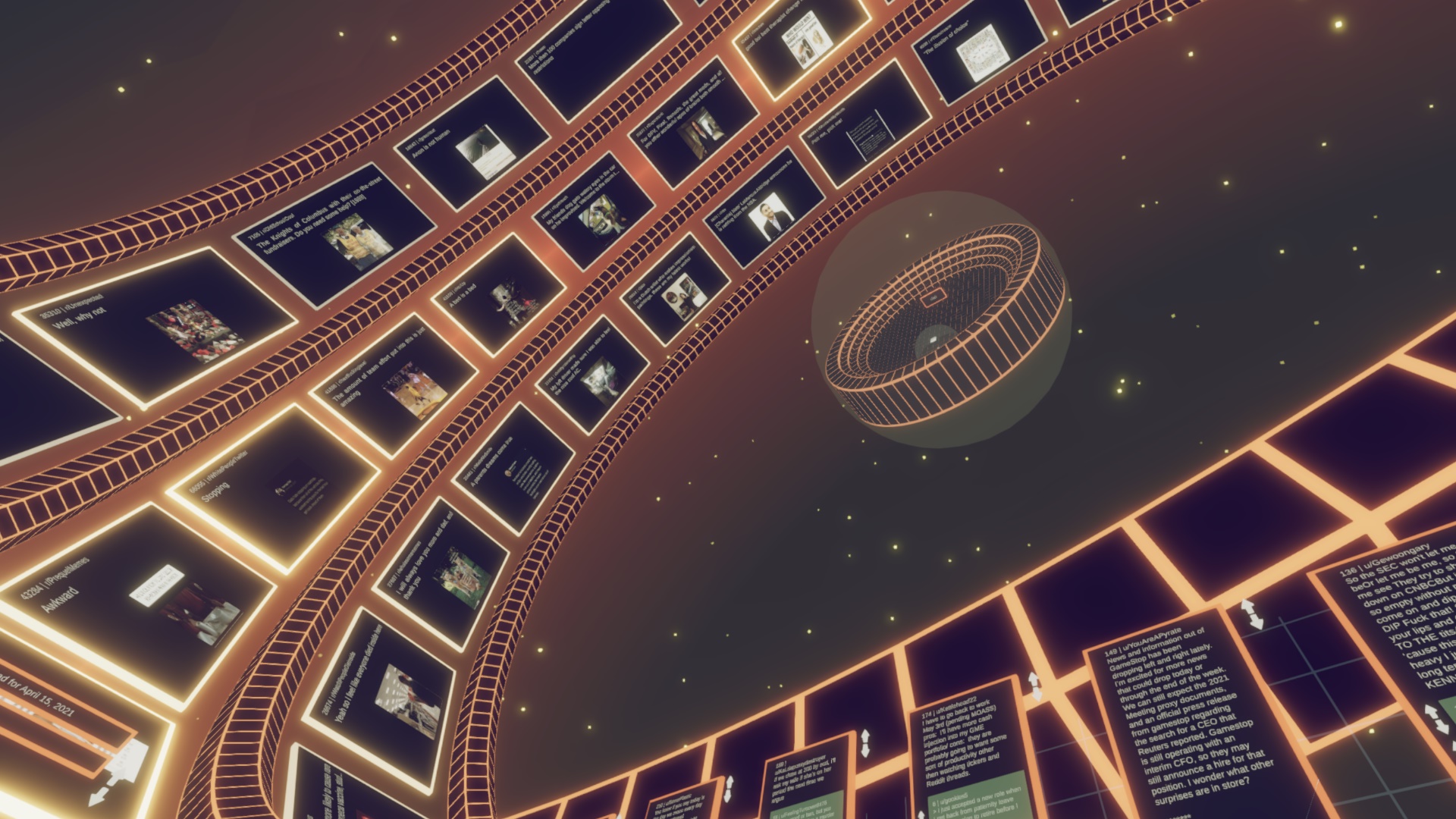
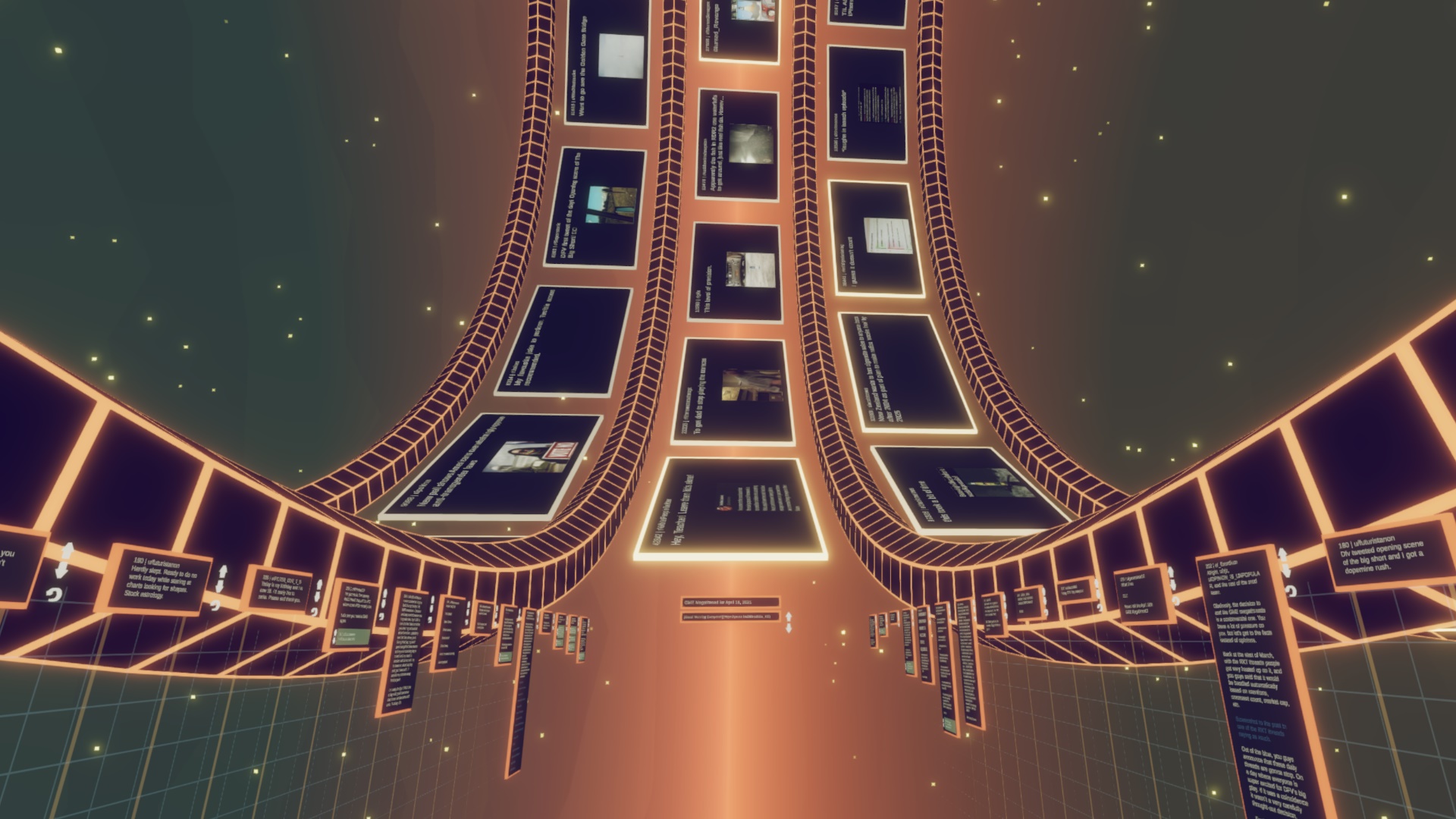
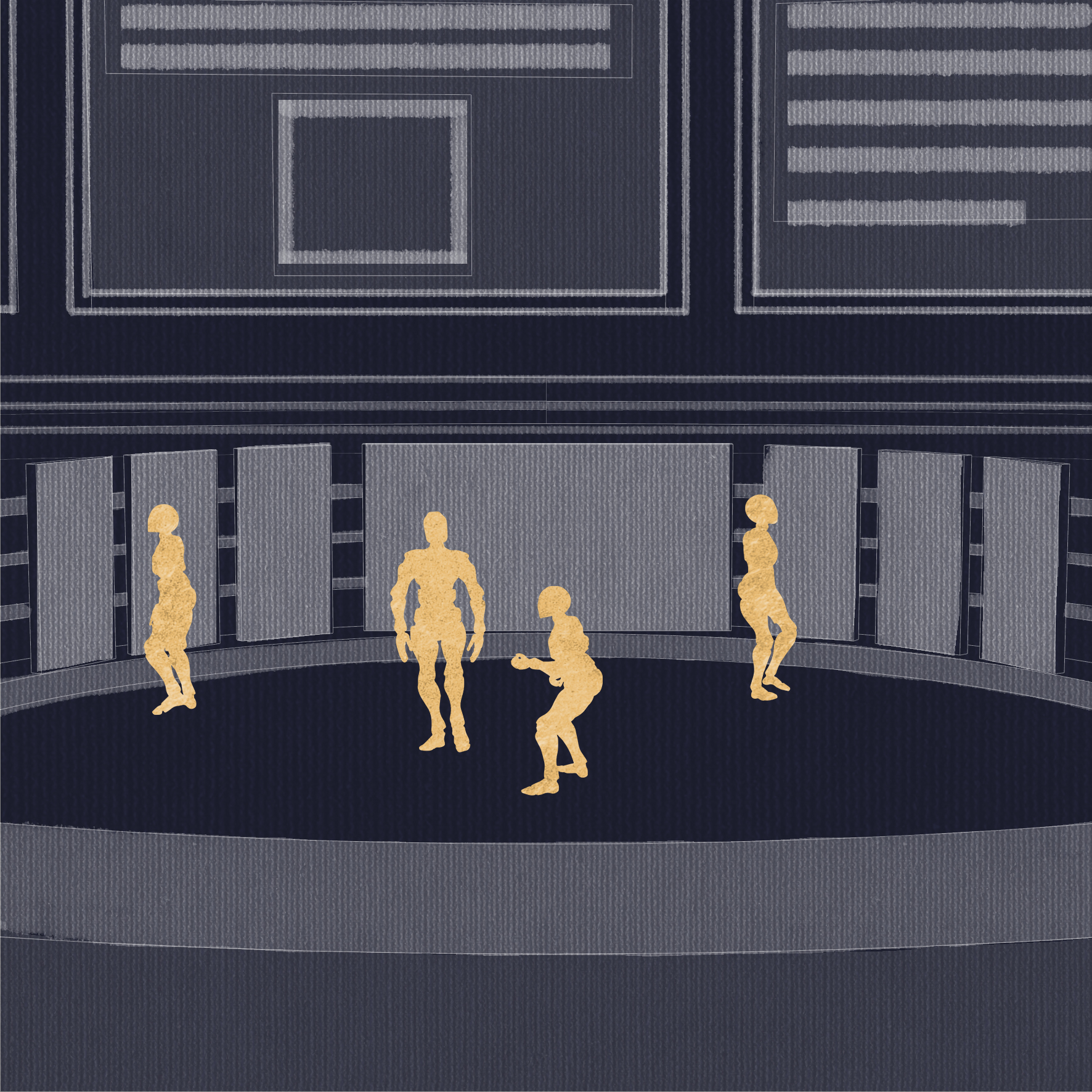
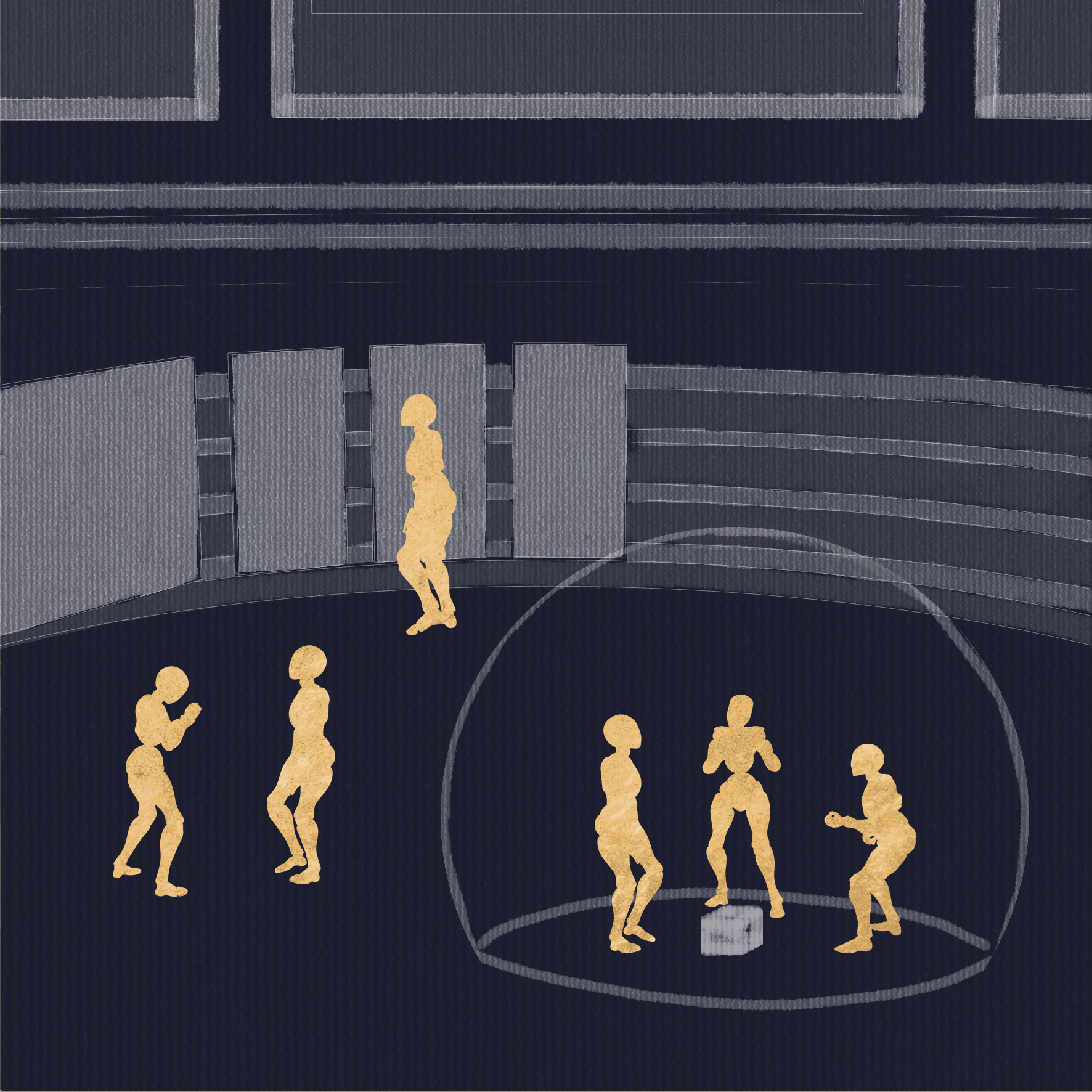
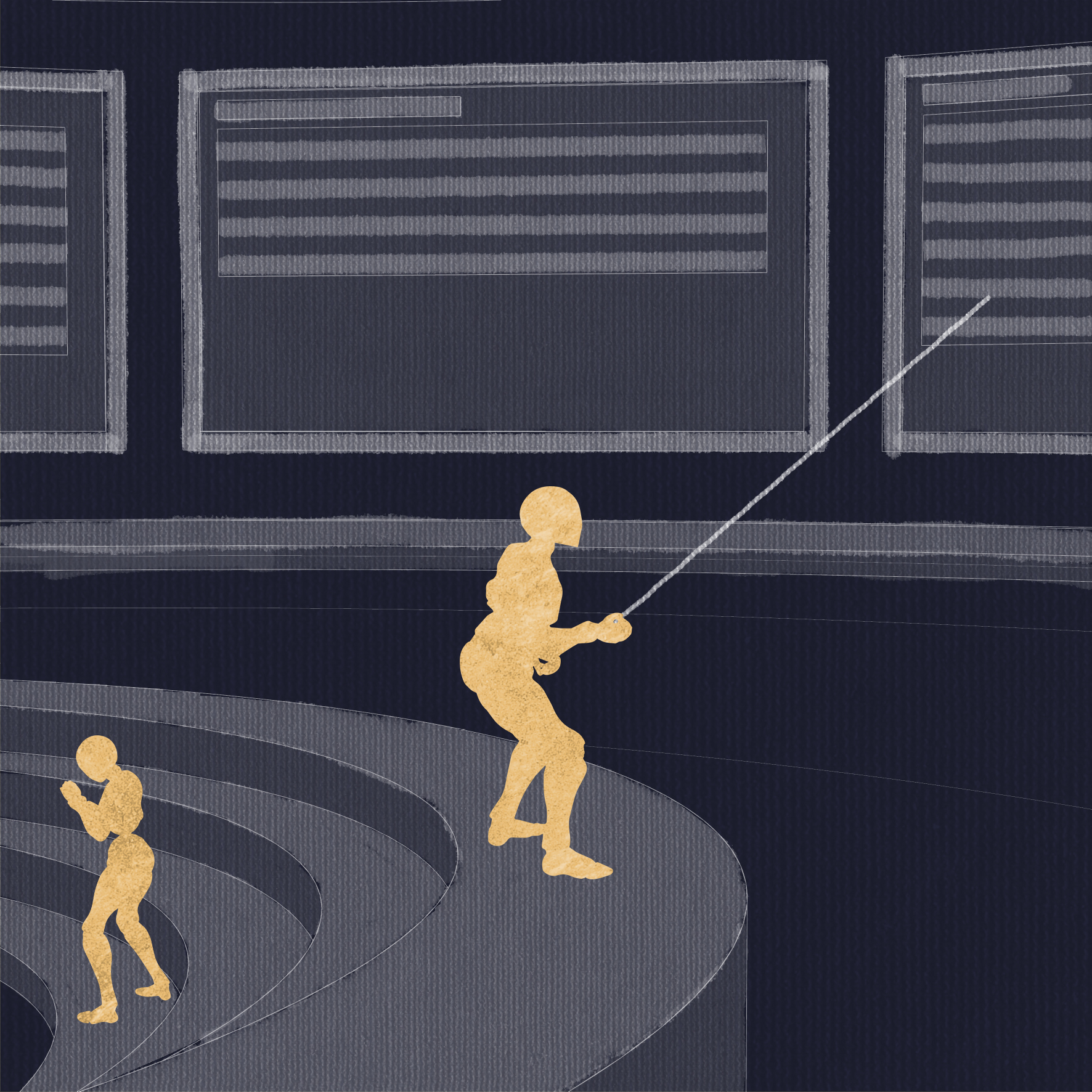
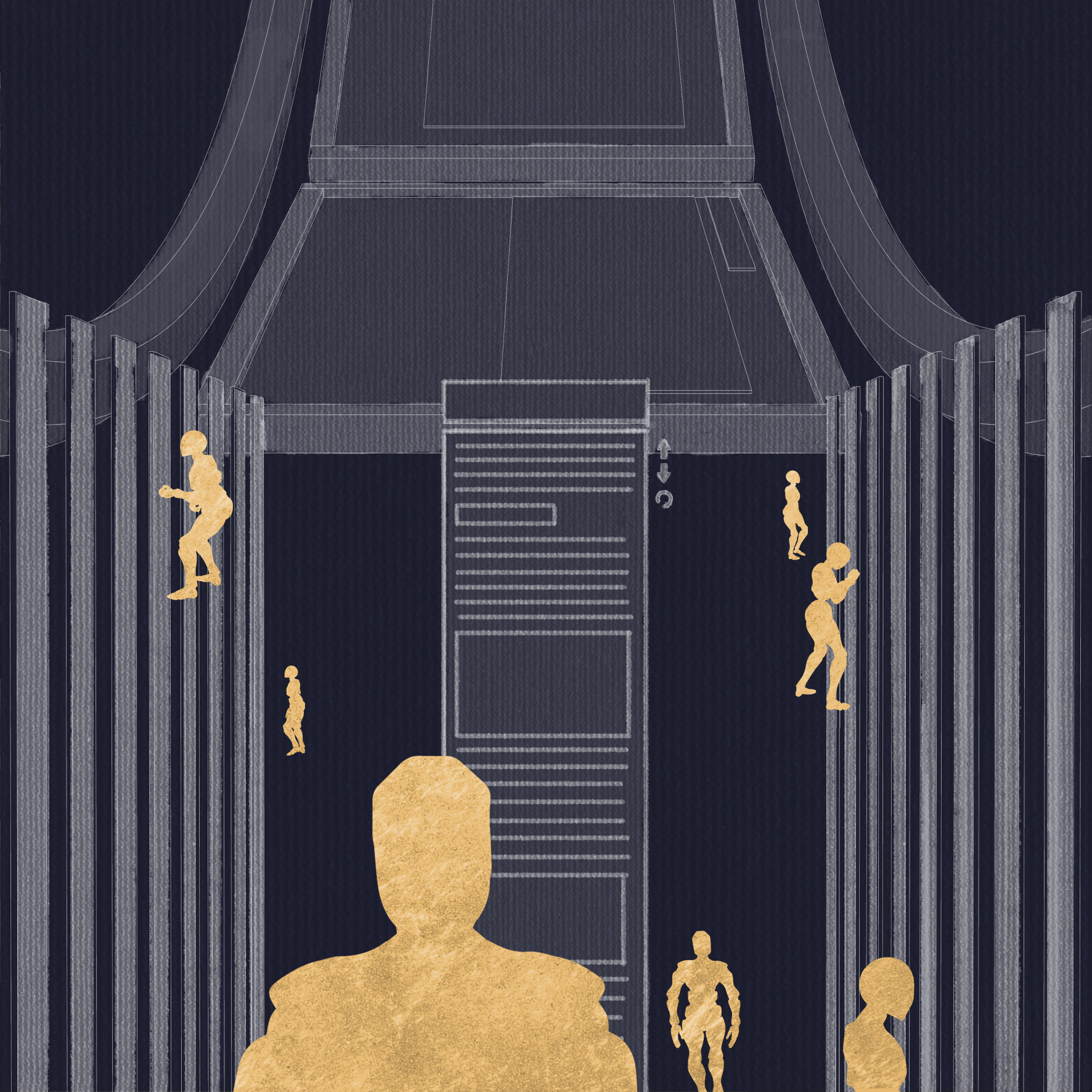
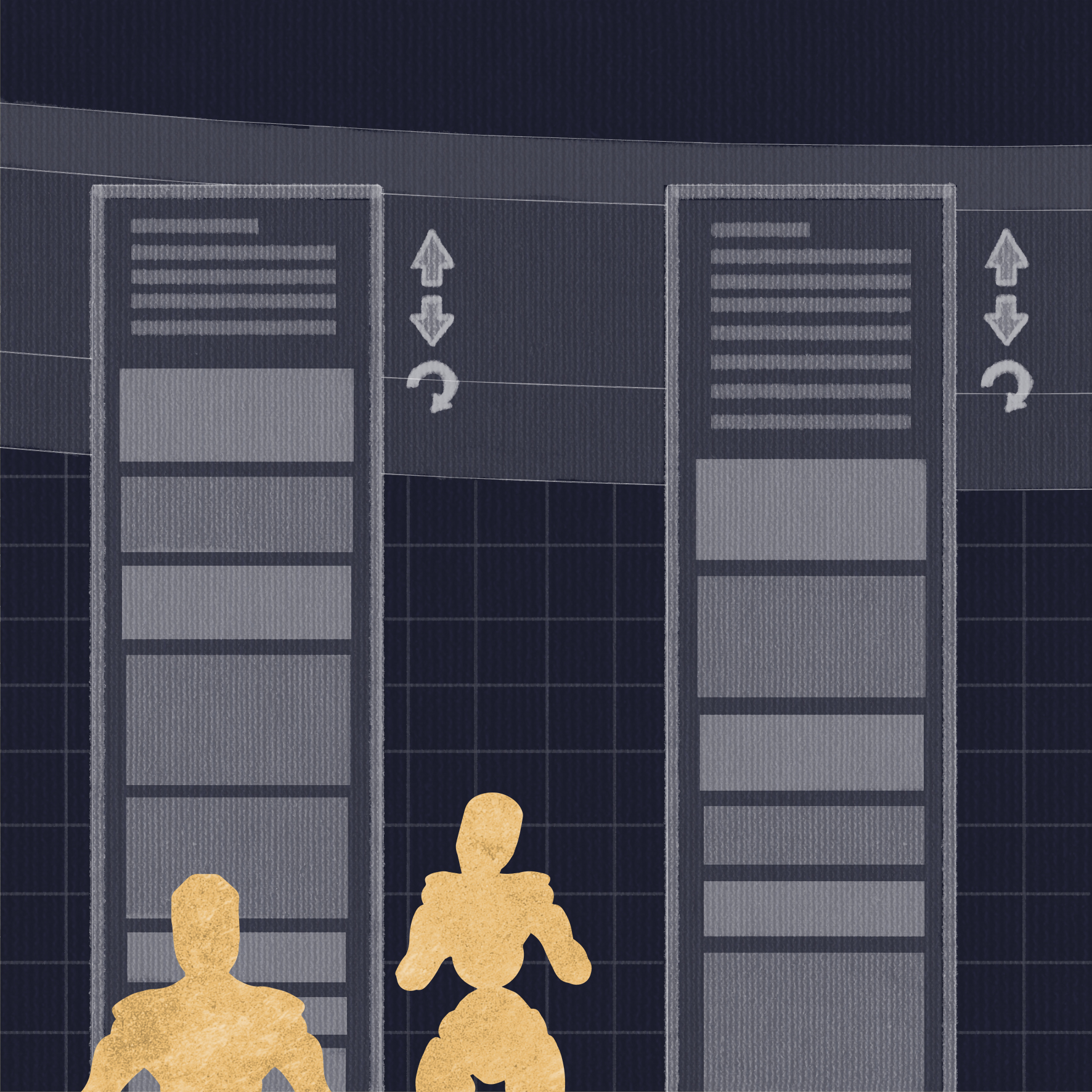
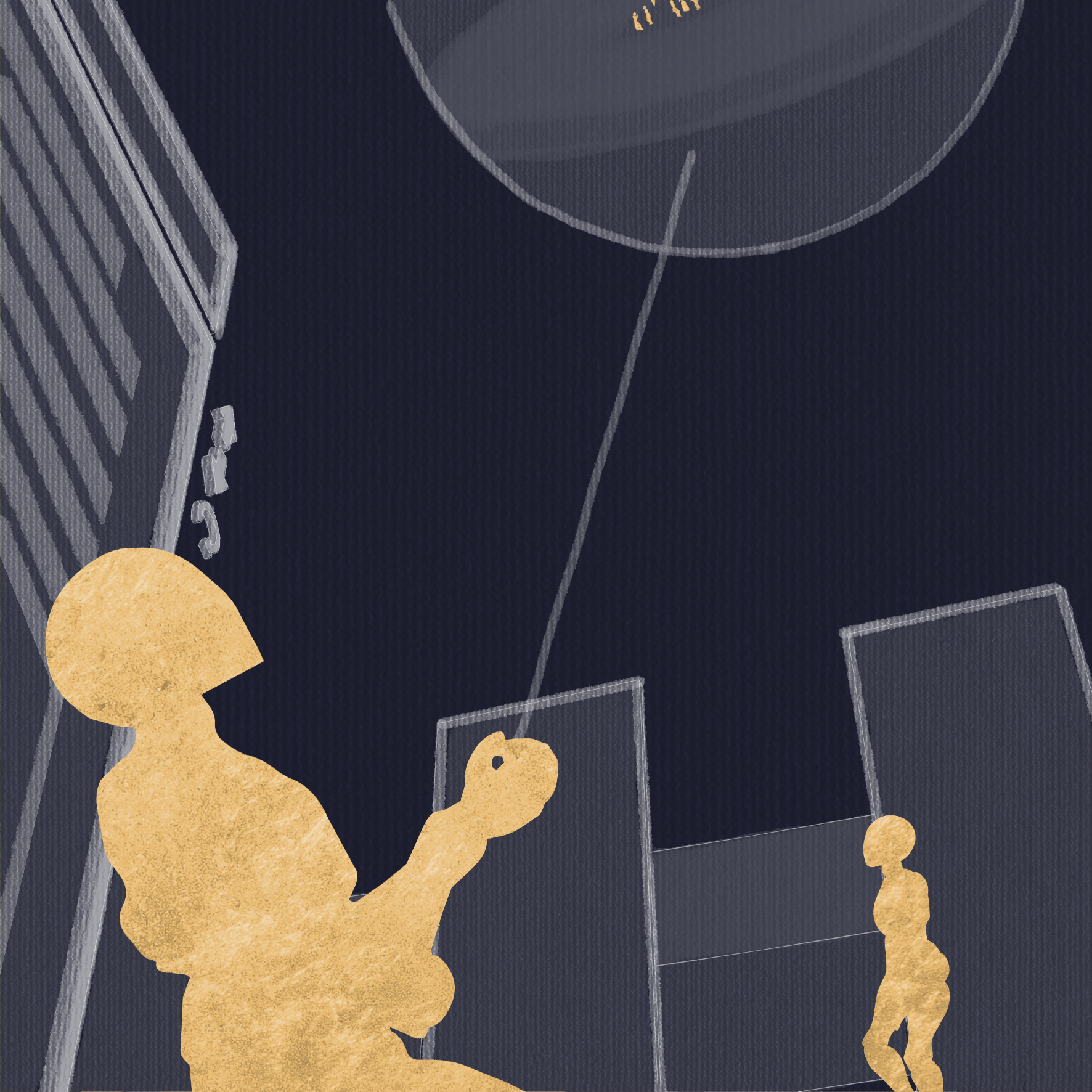
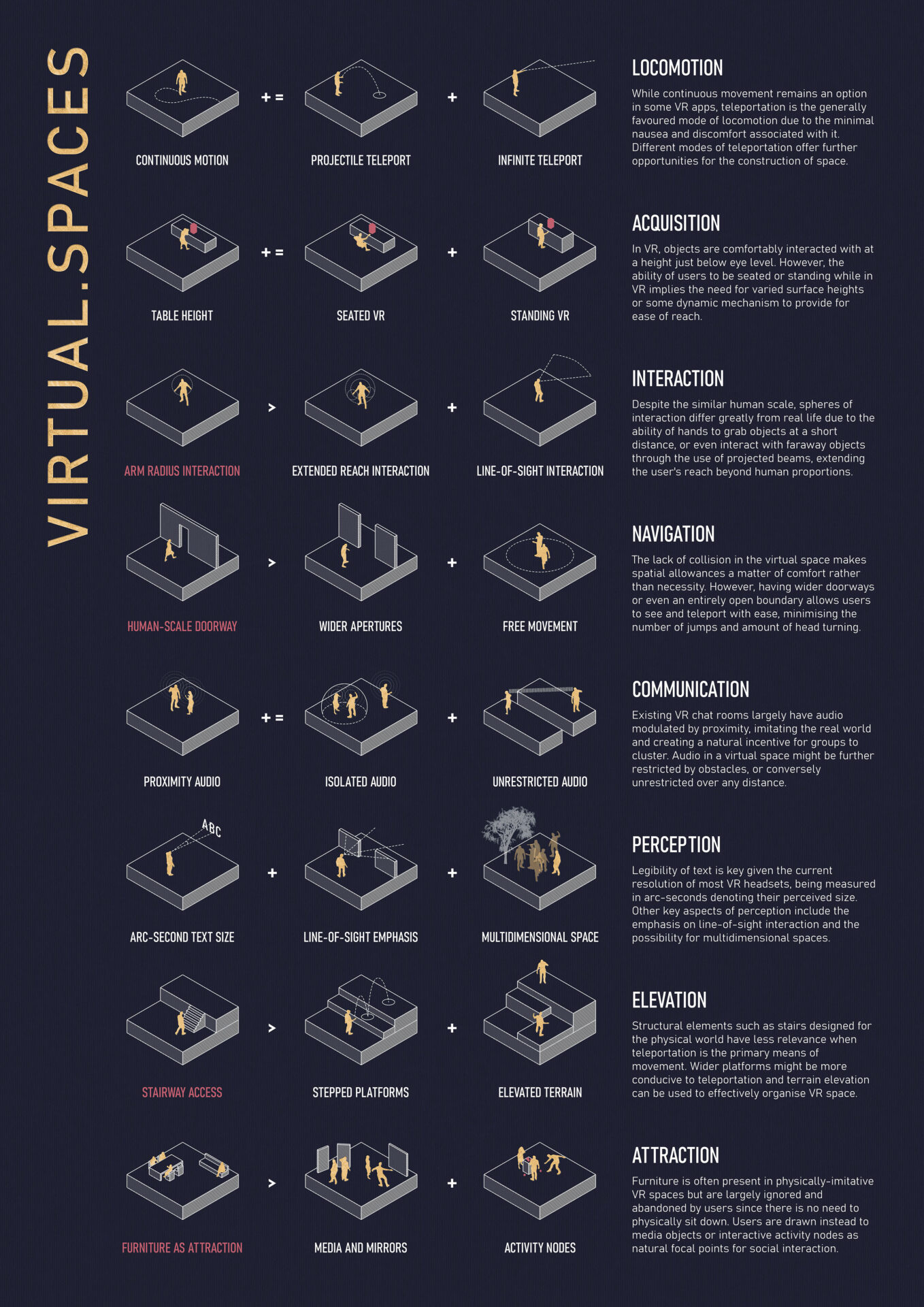
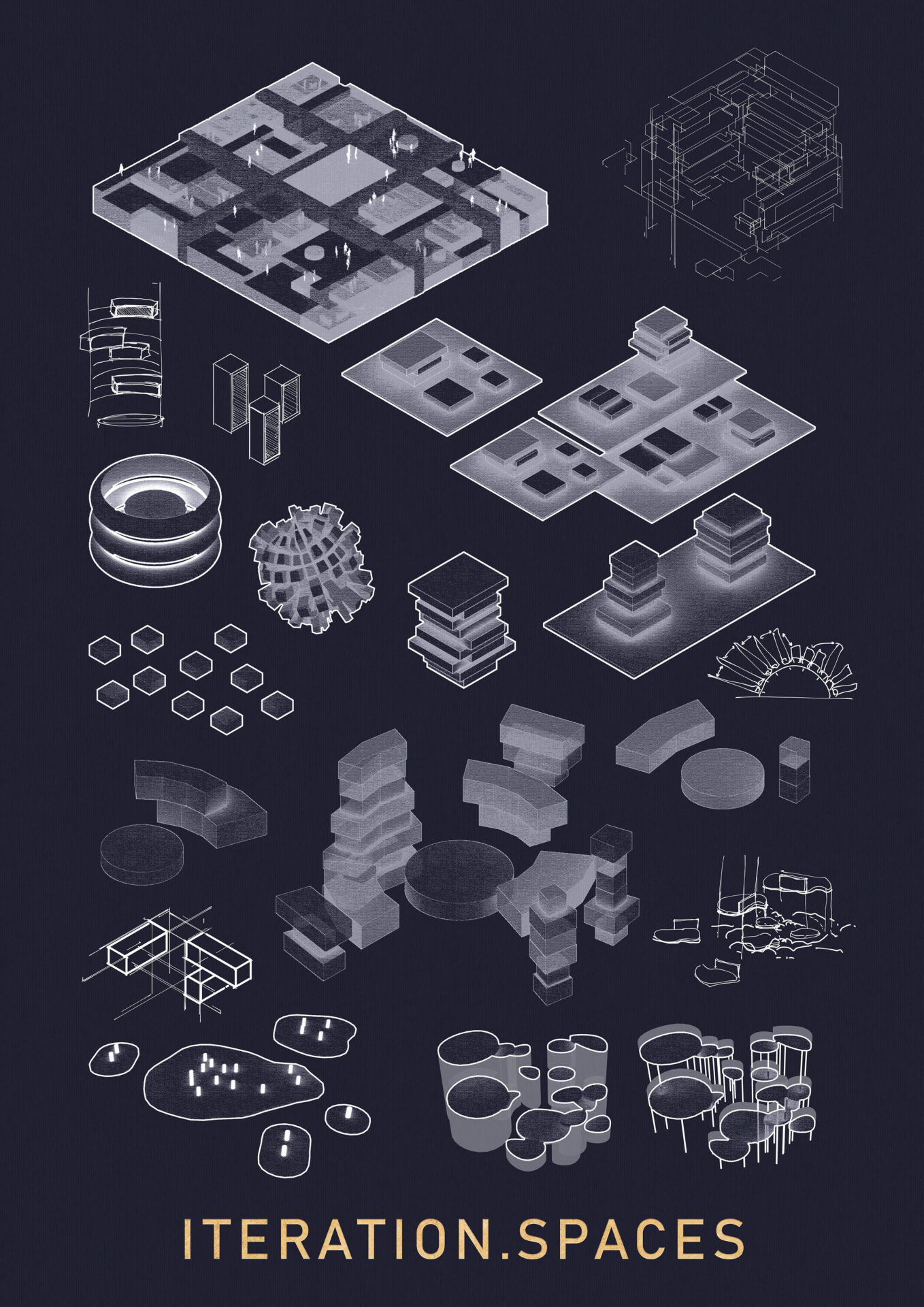
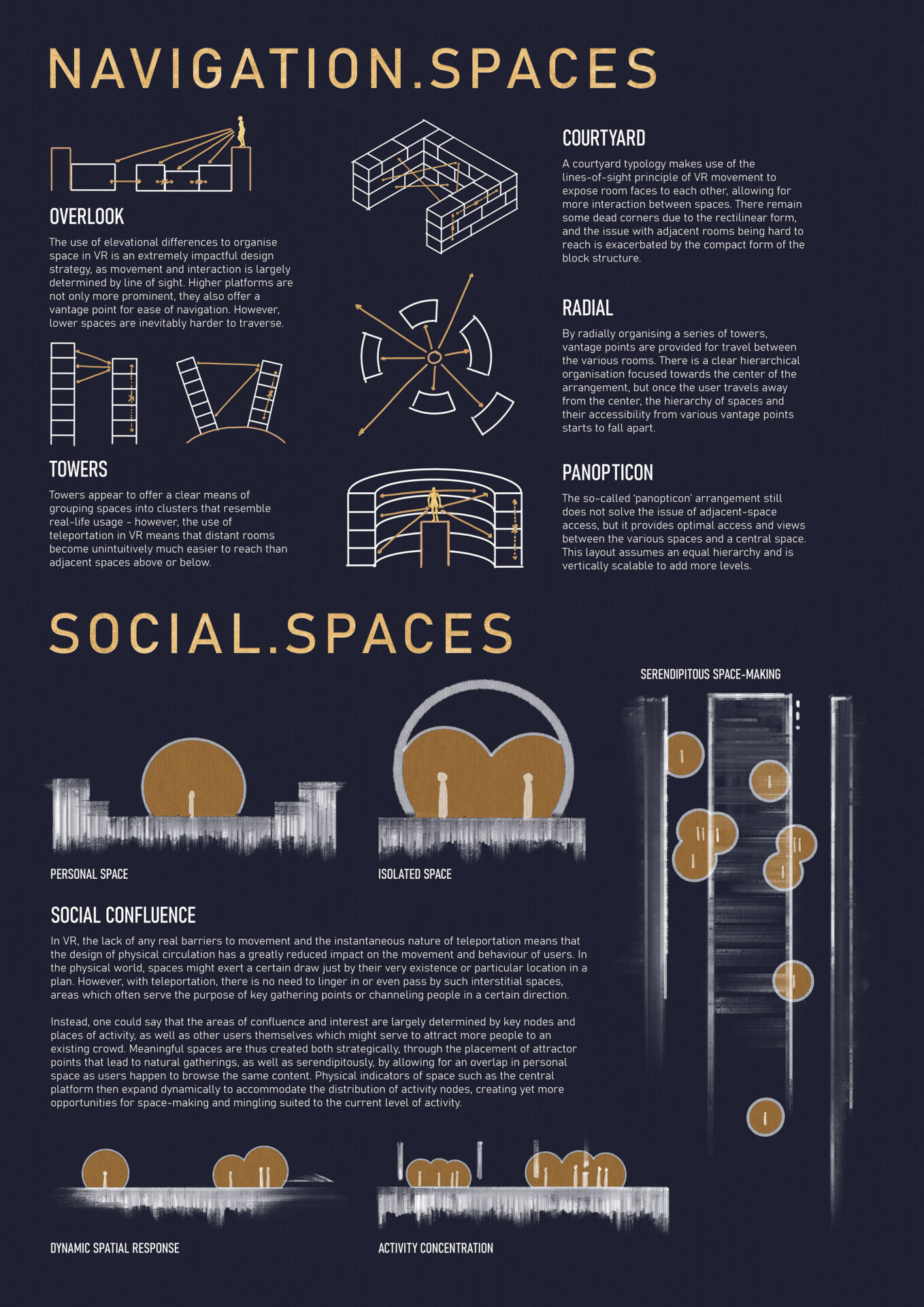
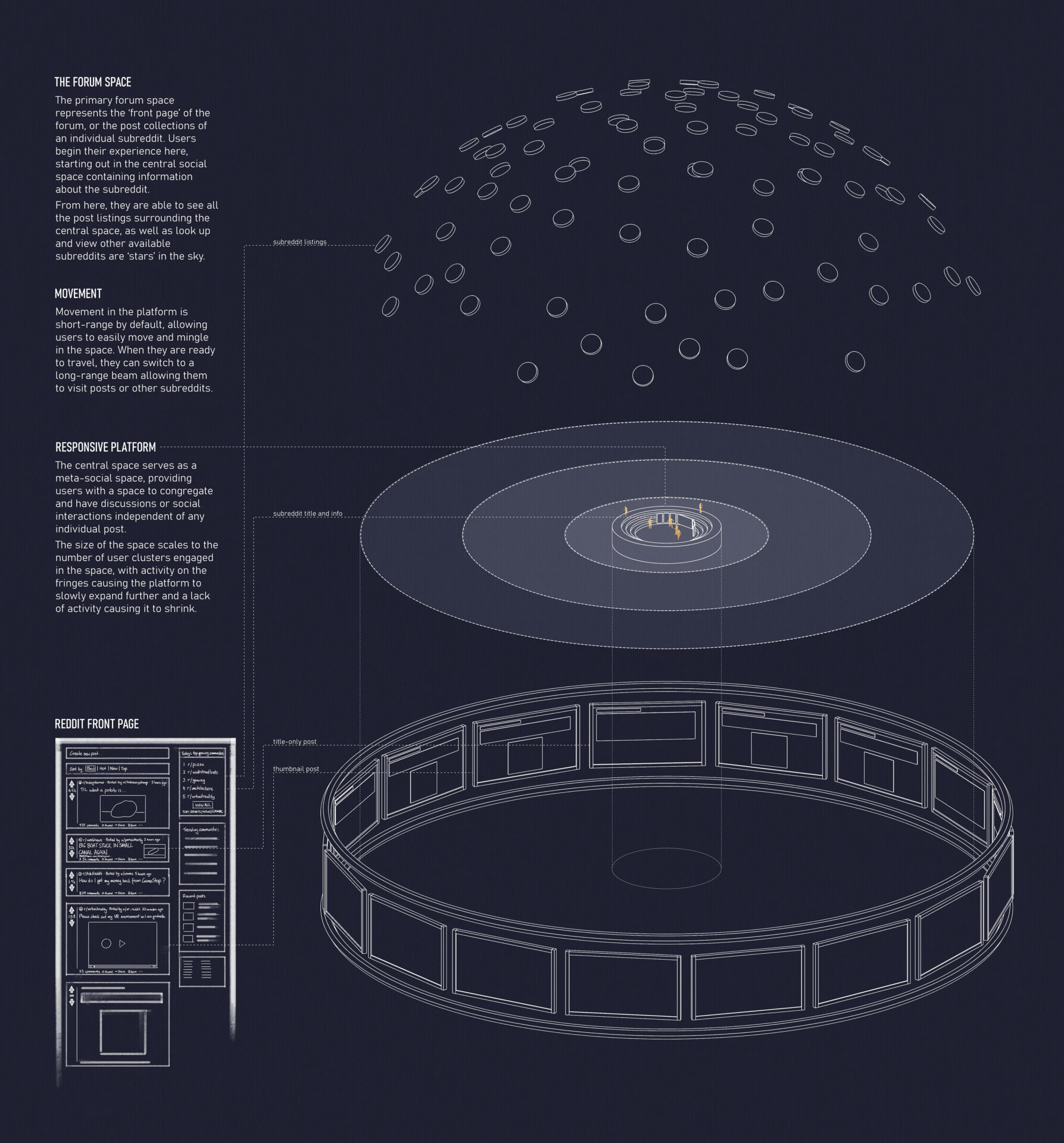
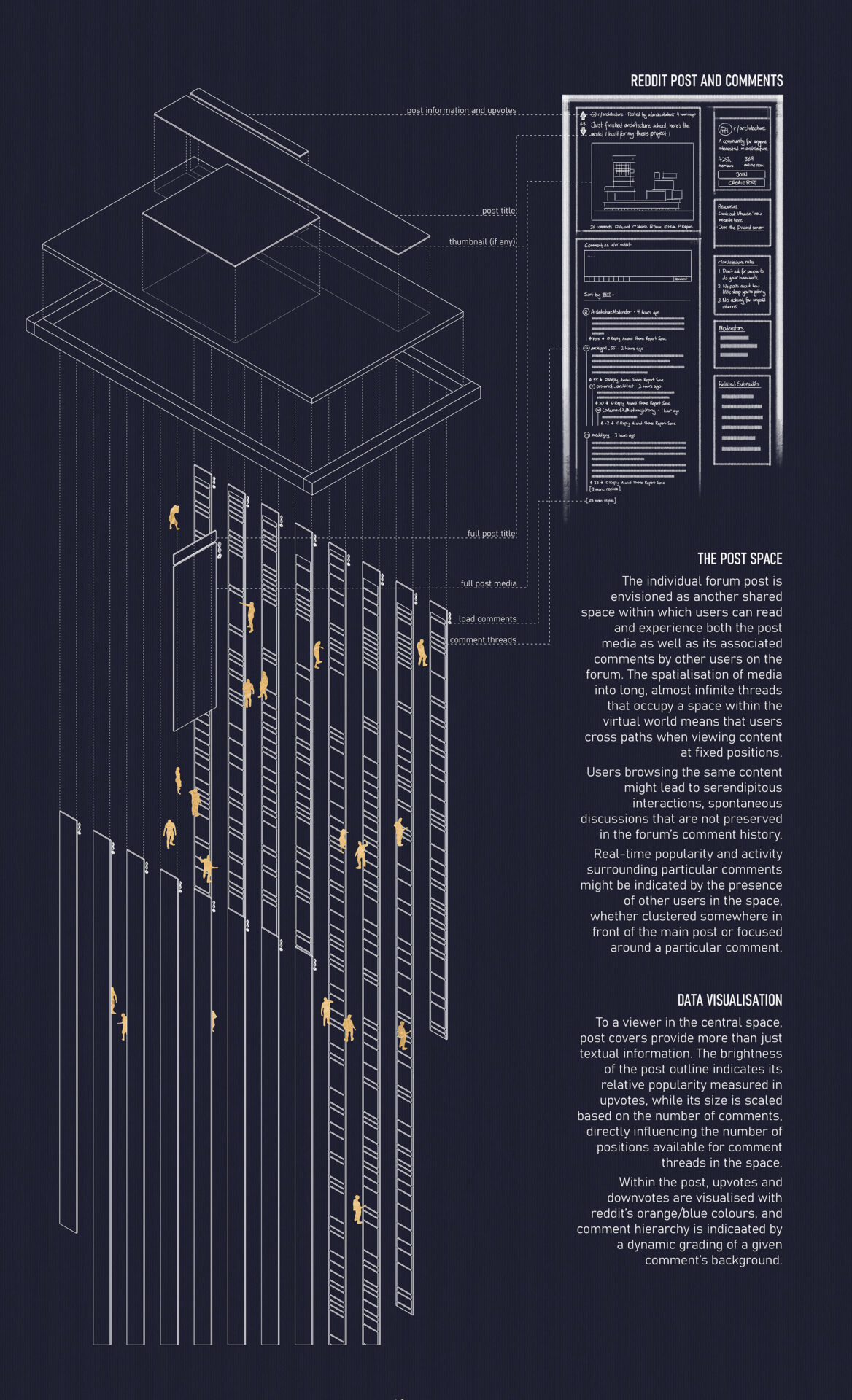
Supervisor's comments:
Consumer Virtual Reality (VR) headsets have been accessible since the early 1990s. Yet, apart from certain narrow uses-cases, VR has had a limited impact on the general population. This thesis started out with an investigation into how the spatial movement and interaction in VR needs to deviate from the laws of the physical world. The experiments culminated in a final project, in which a complex fully functional VR world was created that spatialized Reddit, called Post Spaces. This world connects dynamically to the Reddit website, streams the data, and transforms it into a spatial structure that people can immerse themselves into. If you have a headset, then welcome to the 21st: https://tinyurl.com/post-spaces .
- Assoc. Prof. Patrick Janssen (Dr.)